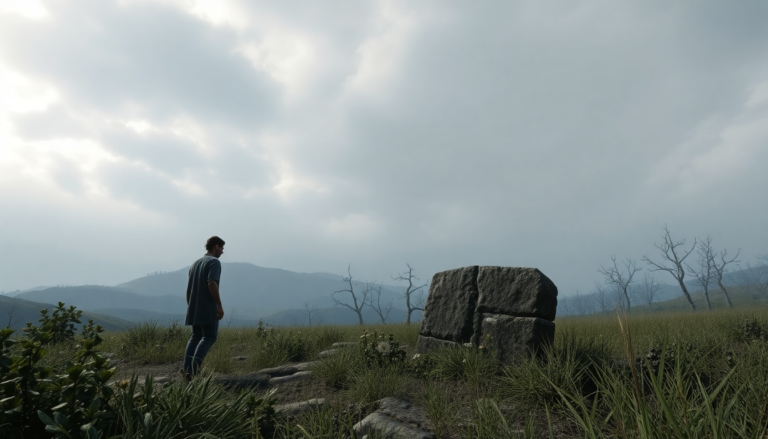Argomenti trattati
Video games have come a long way; they’re no longer just a way to kill time. They now offer profound reflections on life, death, and the emotional rollercoasters that accompany loss. For instance, have you ever played Clair Obscur: Expedition 33? This game challenges players to confront mortality head-on, weaving gameplay with deep themes of grief and acceptance. Let’s dive into a few titles that showcase how death isn’t merely a game mechanic but a central theme that shapes the player’s journey.
The Significance of Death in Gaming
In many video games, death is often just a hurdle—something to overcome or respawn from. But what if I told you that some games flip this script? They use death as a narrative device, unlocking deeper emotional truths. Take Clair Obscur: Expedition 33, developed by Sandfall Interactive. Set in an alternate Belle Époque, it follows a young girl named Maelle and her connection to a mysterious event called ‘Gommage,’ where the deaths of townspeople are symbolically depicted through a painting on a monolith.
This unique mechanic serves as a poignant reminder that death isn’t just an ending; it’s a profound part of the human experience. As players navigate the enchanting world of Lumière, they grapple with the reality of loss and the burden of memory. The developers have skillfully intertwined gameplay with an emotional journey of acceptance. Here, the focus isn’t merely on victory; it’s about understanding the inevitability of death and cherishing the importance of remembrance.
The game’s emotional core explores how individuals react to loss. Characters like Renoir embrace acceptance, while others, like Alicia, remain ensnared in regret. This contrast echoes the five stages of grief proposed by Kübler-Ross, highlighting that acceptance is a winding journey rather than a fixed destination. As players, we’re left pondering our own responses to loss—an experience that can feel both personal and communal.
Games as a Reflection of Real-Life Grief
But Clair Obscur: Expedition 33 isn’t alone. Other titles, like That Dragon, Cancer, tackle the raw and painful reality of grief through personal narratives. Created by Ryan Green, this game allows players to witness a parent’s heart-wrenching journey as they cope with the death of their child from cancer. Here, gameplay isn’t about defeating foes; it’s about navigating memories and emotions, creating an experience that resonates on a deeply personal level.
In both games, mechanics reinforce the narrative. In Expedition 33, painting numbers on the monolith acts as a ritualistic acknowledgment of loss. Meanwhile, in That Dragon, Cancer, moments of hope and despair unfold through interactive storytelling. These games challenge traditional gameplay norms, inviting players to engage with their emotions rather than just aiming for a win.
Another significant title, Death Stranding, delves into themes of connection and isolation in a world where the dead return as dangerous threats. The protagonist, Sam, becomes a bridge between the living and the dead, highlighting how grief can shape our human connections. Each delivery he makes isn’t just a task but a step toward healing, reinforcing the idea that moving forward often involves carrying the weight of loss.
The Artistic Representation of Grief
Artistic expression in gaming plays a vital role in portraying loss. Games like Rime transform the experience of grief into visual poetry. The gameplay transcends mere challenges, guiding players through the emotional terrain of loss with evocative environments and symbolism. Each puzzle and shadow reflects the protagonist’s journey, mirroring the internal struggle of acceptance.
Similarly, Lie in My Heart offers an authentic exploration of suicide and its aftermath. Created by Sébastien Genvo, this game places players in his shoes as they confront the complexities of grief and shame. The gameplay consists of micro-decisions that symbolize the daily reality of navigating life after loss, emphasizing that there are no right answers when faced with trauma.
These games, alongside Clair Obscur and others, mark a shift in gaming from mere escapism to a platform for existential reflection. They invite players not only to engage with narratives of loss but to reflect on their own experiences, turning the act of playing into a deeply personal journey.
Conclusion: Embracing the Reality of Loss
The exploration of grief in video games signifies a crucial evolution—transforming the medium into a space for emotional discourse. As seen in Clair Obscur: Expedition 33 and its counterparts, these narratives compel players to confront the inevitability of death and the necessity of acceptance. Instead of shying away from uncomfortable truths, these games foster a dialogue about mortality, memory, and the essence of being human.
In the end, the message is clear: true understanding comes from facing the reality of loss rather than living in denial. As players journey through these emotional landscapes, they’re reminded that while life may be fleeting, the connections we forge and the memories we carry endure long after the final screen fades to black.

